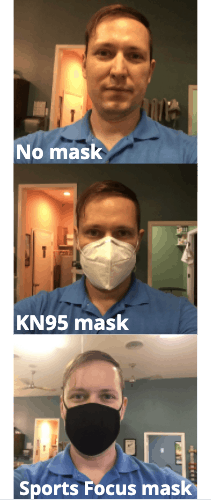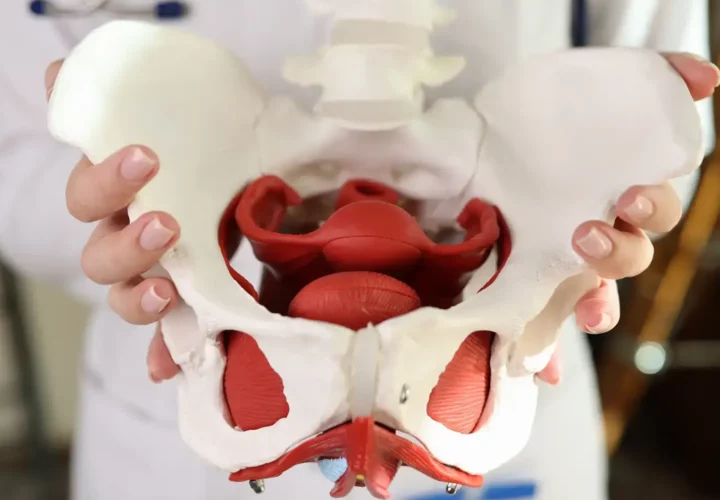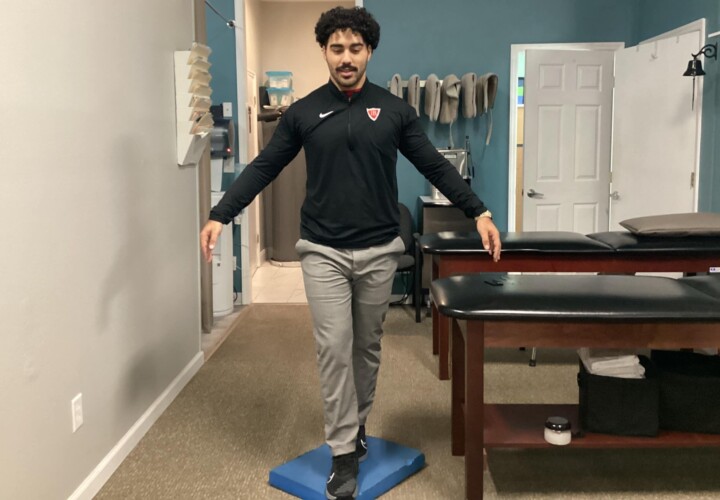As more and more of us mask up, there are a few concerns. A sincere worry by many of my friends and patients has been about the ability of oxygen to pass through their masks during exercise. While objective findings from various medical personnel and provider companies have not found this to be the case during typical daily activity, we decided to do an experiment on our own here at high level exercise, because why not! Keep in mind that this experiment is on a healthy individual. Therefore it can not necessarily be extrapolated to the population at large. But this case study may be encouraging to those of you wondering!
We decided to put our DPT Alec through 12 sets of 20 second sprint intervals on our upright bike set at level 12 resistance with 10 seconds of rest between intervals. 4 intervals each were performed in unmasked and masked conditions. Heart rate and blood oxygenation saturation estimates (SpO2) were taken immediately after the fourth interval. Alec’s heart rate was then allowed to return to baseline before the next stage of the experiment.

The Experiment
Alec was tested in 3 conditions:
- Without a mask (normal)
- Tested with a 5 layer sport focus mask (4 cloth layers and one N95 filter material layer)
- With a KN95 mask
In the unmasked control, Alec’s SpO2 was 98 (the highest possible being 99, with average resting for most people varying between 96 and 99). At the end of the sprint trials, his heart rate maxed at 158 beats per minute (bpm).
With a sport specific mask (here using a fitted Radical Fencing mask released recently for protection of athletes engaging in practice) his SpO2 remained relatively constant at 97. His max heart rate coming in at 155 bpm.
With the clinic KN95 mask, his SpO2 remained at 97. His heart rate remained relatively constant at 154 bpm.
Overall Findings
At no point during this experiment did Alec’s SpO2 drop beyond the normal resting range despite his high heart rate. For age, Alec’s maximum safe should be below 190. His target zone during a high intensity interval is between 150 and 165 bpm. Heart rate remained in the safe zone indicating no significant cardio respiratory distress. This actually matches most mask research. “Altitude masks” which supposedly simulate low oxygen training for athletes training at sea level have been shown to not be able to effectively limit oxygenation and only seem to improve strength of respiratory musculature for healthy individuals.
Alec did note that it felt more difficult to draw air in with both masks on. Meaning that these same respiratory muscles are likely being challenged just like in an altitude mask. However, given that heart rate and oxygen saturation remained normal in all conditions, this effort does not seem to correlate with hypoxia at all!
So, healthy exercisers should of course always monitor themselves during high intensity training. But per this experiment the most likely side effect of wearing a mask during training should be similar to wearing an “altitude” mask! This may be different for you. However, always check with your physician about the safety of any exercise program or tool for your own body first!


